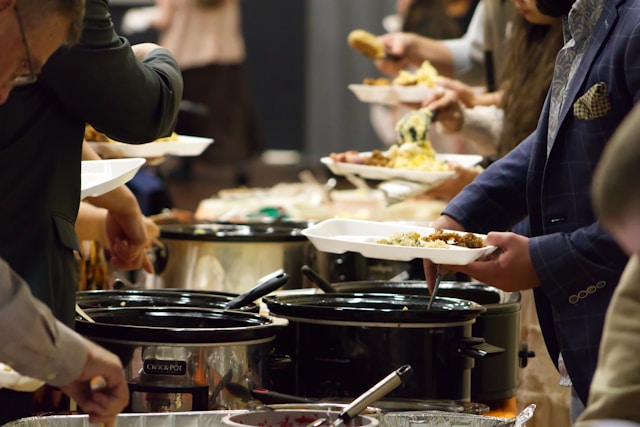Ah, the communal meal. There’s a certain magic, isn’t there, to a table groaning under the weight of dishes brought by friends and neighbours? In Canada, we often call this a potluck, a term brimming with cheerful chaos and the promise of culinary surprises. Yet, whispers of another term, ‘covered dish,’ occasionally surface, perhaps carrying echoes from gatherings south of the border or from generations past. Understanding the subtle dance between these communal dining terms reveals much about the art of Canadian entertaining and the simple, profound joy of food sharing. Is one merely a synonym for the other, or does ‘covered dish’ imply a slightly different, perhaps more considered, approach to breaking bread together?
The term ‘potluck’ is deeply ingrained in the Canadian social fabric, suggesting a delightful free-for-all where guests arrive bearing whatever culinary creation strikes their fancy. It speaks of spontaneity, trust, and a charming element of surprise. Will it be five different potato salads tonight, or a perfectly balanced feast? That’s part of the adventure. The phrase ‘covered dish,’ while less common in everyday Canadian parlance, historically carries a similar meaning: a gathering where attendees contribute a prepared dish, typically transported with a lid or covering – hence the name. Often associated with community events or church suppers, particularly in regions influenced by Southern US traditions, it embodies the same spirit of collective contribution.
However, delving deeper, some suggest the ‘covered dish’ concept invites a touch more gentle orchestration than its potentially more haphazard cousin, the potluck. This isn’t about rigid control or stifling culinary creativity; rather, it’s a subtle nudge towards ensuring a harmonious spread. Imagine the host, or perhaps a designated planner for a regular gathering, offering gentle guidance. Not dictating recipes, perish the thought, but perhaps suggesting categories – a main dish, a couple of vibrant salads, something comforting and savoury from the oven, a sweet ending or two. This avoids the unintentional avalanche of, say, dips and chips, ensuring a more rounded and satisfying meal for everyone involved.
This light touch of coordination transforms the potential for ‘mishmash’ into a beautifully cohesive, yet still wonderfully diverse, table. It allows guests creative freedom within a loose framework. Someone might bring their signature tourtière, another a colourful quinoa salad bursting with freshness, while someone less inclined towards cooking could contribute a wonderful artisanal bread or a selection of local cheeses. It respects the essence of food sharing – the collective effort – while smoothing out the logistical wrinkles. It ensures that the communal table offers variety and balance, making the shared experience even more pleasurable.
Whether one calls it a potluck or a covered dish dinner, the heart of the matter remains the same: the warmth of Canadian entertaining built on shared effort and enjoyment. In an era where dining out can strain the budget and lives seem ever busier, embracing this style of gathering feels both nostalgic and incredibly current. It allows hosting without the burden falling solely on one person, fostering connection and community around the simple act of eating together. It’s about fostering connection, sharing deliciously, and maybe, just maybe, ensuring there’s more than just pasta salad on offer. So, gather your friends, perhaps suggest a loose theme, and revel in the delicious tapestry woven by many hands.

